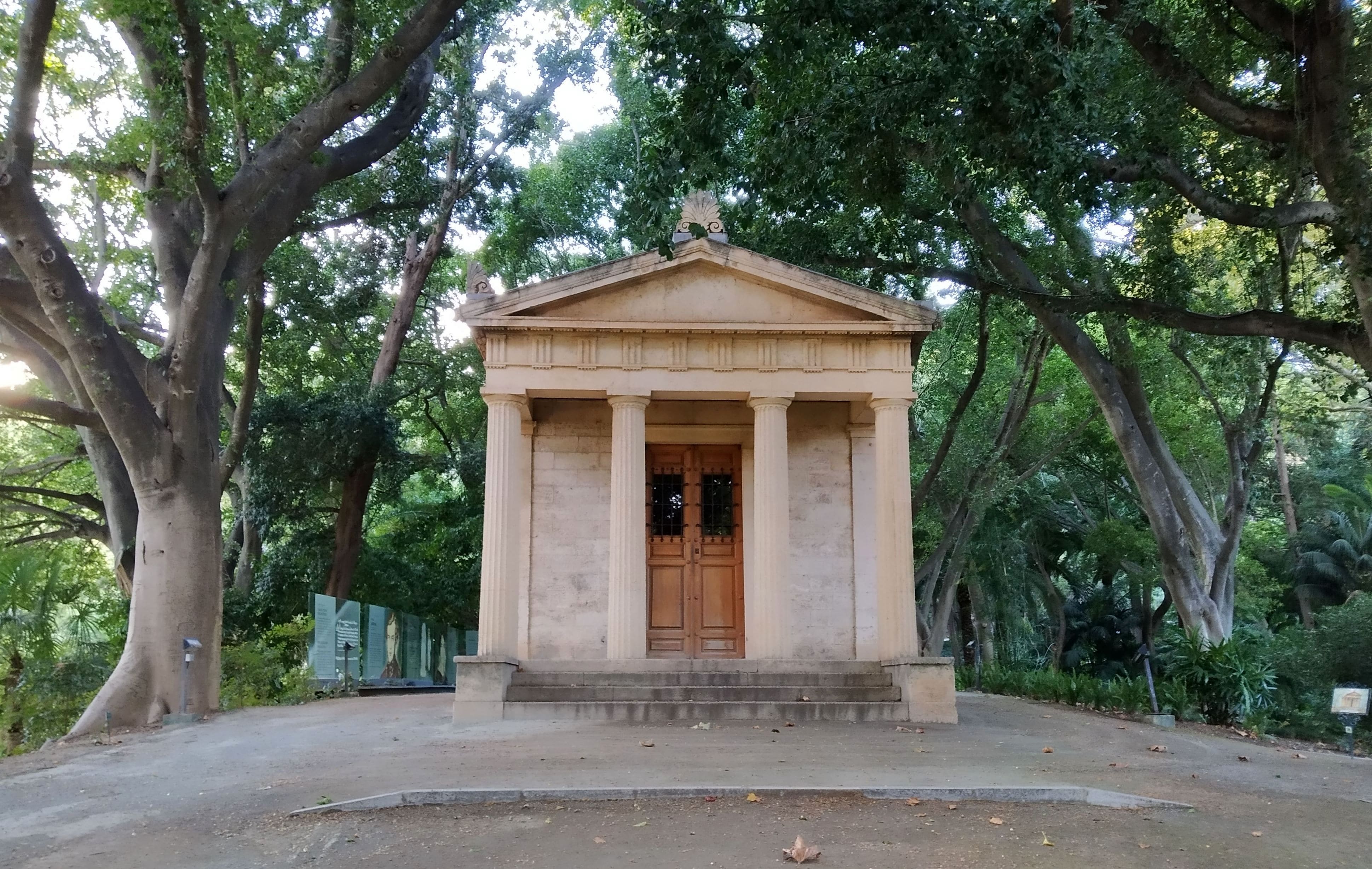The Loring Museum
From its inception, La Concepcion was renowned throughout Europe, though not for the exuberance and beauty of the garden itself; its fame was due instead to the magnificent collection of archaeological remains at the Loring Museum, a Doric-style pavilion built on a Roman mosaic originally discovered in Cartama which depicted the feats of Hercules. For many years, the Lorings strove to restore all of the archaeological remains that they encountered. The highlight of their collection was undoubtedly the Lex Flavia Malacitana, a bronze piece displaying the Roman laws by which Malaga was governed in the year 80 A.D., which now resides in the National Archaeology Museum.
Early in 1858, Jorge Loring heard that a Roman mosaic had been unearthed in a house in the village of Cartama. Realising the significance of this discovery, the Marquis purchased the mosaic and had it brought to his retreat at La Concepcion, despite the fact that it was incomplete, the missing section probably having been destroyed when the foundations of the house under which it was found were dug up. The Loring Museum, designed by the German architect Strack, used the dimensions of the mosaic as its floor plan. The Lorings summoned Luigi Leonini, an expert from Rome, to reconstruct the mosaic.
Today, the majority of the sculptures, mosaics, tombs and other Roman pieces that once made up the Lorings' collection are on display at Malaga's Provincial Museum.


